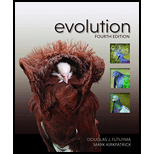
Concept explainers
To explain: The evidence that incomplete lineage sorting (ILS) has affected DNA variation in humans, chimpanzees, and gorillas.
Introduction: Incomplete lineage sorting is a factor that makes it difficult to determine the phylogenetic relations between the radiation species. Radiation species are those species that descended from a common ancestor in a short time period. ILS has chances to be common between the commonly related species.
Explanation of Solution
Incomplete lineage sorting is said to occur when a phylogenetic tree developed using a single gene that has differences compared to the tree developed for population or species level. ILS can come as a problematic cause for determining phylogenies because of its increased frequencies. Studies have shown common ancestry between the humans, chimpanzees, and the gorillas. Molecular studies show that ILS has a significant effect on the DNA variation of these species. ILS has caused polymorphism to inherit in two or more species that are descended from the same common ancestor. For example, studies have shown a significant relation between six alleles of humans and 4 alleles of chimpanzees of the same gene at “major histocompatibility” loci A and B. These two-locus are found in both the species and indicate that these loci have arose the method of gene duplication in their common ancestor before
Want to see more full solutions like this?
- Payne, B. A. et al. (2013) present evidence that a low level of heteroplasmic mtDNA exists in all tested healthy individuals. (a) What are two likely sources of such heteroplasmy? (b) What genetic conditions within a given mitochondrion are likely to contribute to such a variable pool of mitochondria?arrow_forwardA recent study examining the mutation rates of 5669 mammalian genes (17,208 sequences) indicates that, contrary to popular belief, mutation rates among lineages with vastly different generation lengths and physiological attributes are remarkably constant [Kumar, S., and Subramanian, S. (2002). Proc. Natl. Acad. Sci. USA 99:803–808]. The average rate is estimated at 12.2 * 10-9 per bp per year. What is the significance of this finding in terms of mammalian evolution?arrow_forwardWhat is meant by the genetic conflict hypothesis?arrow_forward
- In a study of a muscle disorder, several affected families exhibitedvision problems, muscle weakness, and deafness (M. Zeviani et al. 1990.American Journal of Human Genetics 47:904–914). Analysis of themtDNA from affected members of these families revealed that largenumbers of their mtDNA molecules possessed deletions of varyinglengths. Different members of the same family and even differentmitochondria from the same person possessed deletions of differentsizes, so the underlying defect appeared to be a tendency for the mtDNAof affected persons to have deletions. A pedigree of one of the familiesstudied is shown below. The researchers concluded that this disorder isinherited as an autosomal dominant trait, and they mapped the diseasecausinggene to a position on chromosome 10 in the nucleus.a. What characteristics of the pedigree rule out inheritance of a traitencoded by a gene in the mtDNA as the cause of this disorder?b. Explain how a mutation in a nuclear gene might lead to deletions…arrow_forwardSteven Frank and Laurence Hurst argued that a cytoplasmically inherited mutation in humans that has severe effects in males but no effect in females will not be eliminated from a population by natural selection because only females pass on mtDNA. Using this argument, explain why males with Leber hereditary optic neuropathy are more severely affected than females.arrow_forwardFor three years, Gunther Schlager and Margaret Dickie estimated theforward and reverse mutation rates for five loci in mice that encodevarious aspects of coat color by examining more than 5 million mice forspontaneous mutations (G. Schlager and M. M. Dickie. 1966. Science151:205–206). They detected the following numbers of mutations at thedilute locus: Gametes examined Mutations detectedForwardmutations 260,675 5Reversemutations 583,360 2 Calculate the forward and reverse mutation rates at this locus. If thesemutations rates are representative of rates in natural populations of mice,what would the expected equilibrium frequency of dilute mutations be?arrow_forward
- One of the findings from Strickland et al. 2019, was that certain color morphs among Chelymorpha alternans beetles are more common at some field sites than they are at other sites. Strickland and colleagues used cross breeding experiments to investigate these patterns and found evidence that color variation was mainly due to Mendelian inheritance. In other species, geographic variation in coloration might not be due to Mendelian genetics. (a) What is another possible explanation for geographic variation in coloration? (b) What sort of experiment could you use to test this alternative explanation?arrow_forwardA number of comparisons of nucleotide sequences among hominidsand rodents indicate that inbreeding may have occurredmore often in hominid than in rodent ancestry. Bakewell et al.(2007. Proc. Nat. Acad. Sci. [USA] 104: 7489-7494) suggest thatan ancient population bottleneck that left approximately 10,000 humans might have caused early humans to have a greaterchance of genetic disease. Why would a population bottleneckinfluence the frequency of genetic disease?arrow_forwardThe ancestor of cats was presumably homozygous for wild type at all of the described genes. What was the phenotype of this ancestral cat at each of these loci? 1)Dark grey with black mackerel stripes 2)Light grey female with dark grey mackerel stripes 3)Light brown male with chocolate tips 4)Black female with large white patches 5)Cream male with small white patches and orange mackerel stripes 6)A uniformly colored black catarrow_forward
- what is the role of gene duplication, whole genome duplication, transposable elements, and horizontal gene transffer in genome evolution?arrow_forwardWhat is "homology"? What is BLAST and how is it used? What’s a major assumption when drawing evolutionary relationships between organisms based onDNA sequences?arrow_forwardA neutral mutation arises in a diploid population of 10,000 individuals. Use this information to answer the following questions. a) What is the probability that the neutral allele goes to fixation? b) Assuming that the neutral mutation eventually goes to fixation, what is the expected time to fixation (in generations)?arrow_forward
 Biology: The Dynamic Science (MindTap Course List)BiologyISBN:9781305389892Author:Peter J. Russell, Paul E. Hertz, Beverly McMillanPublisher:Cengage Learning
Biology: The Dynamic Science (MindTap Course List)BiologyISBN:9781305389892Author:Peter J. Russell, Paul E. Hertz, Beverly McMillanPublisher:Cengage Learning
